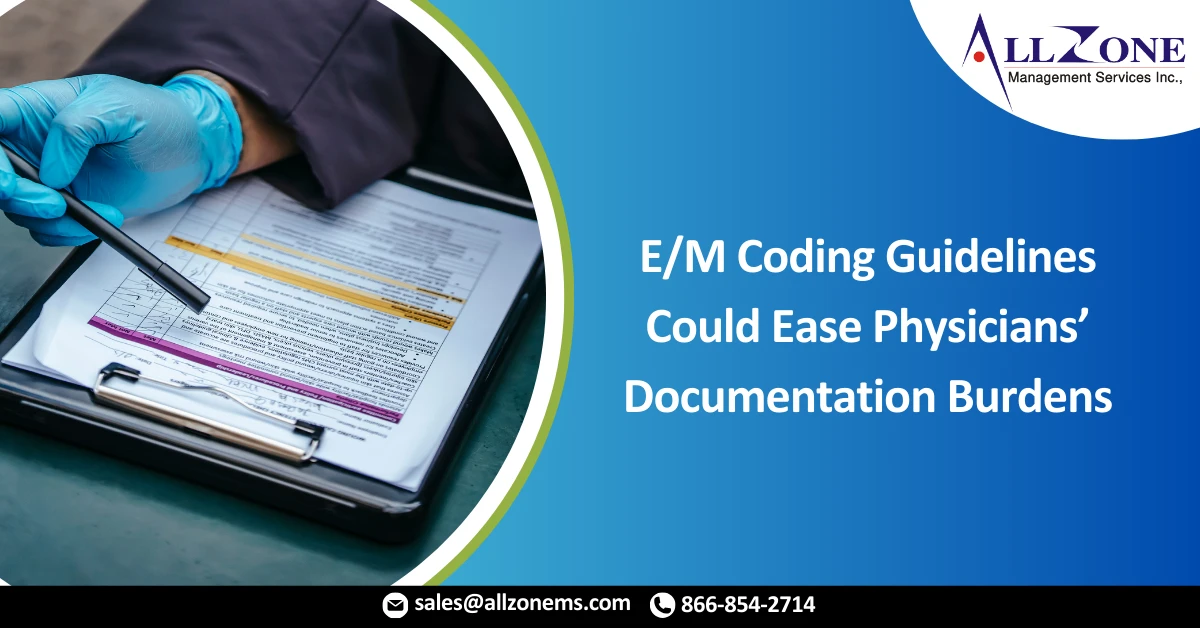Physicians will potentially have a lighter documentation burden and more time to spend with patients in 2021 thanks to an overhaul of Medicare Coding guidelines for outpatient evaluation and management (E/M) services.
“The whole point was to have people not document stuff that was not necessary, not relevant to the clinical management of the patient,” said Peter Hollmann, MD.
The revised E/M Coding guidelines were developed by a work group assembled by the AMA representing its Current Procedural Terminology (CPT®) Editorial Panel and the AMA/Specialty Society RVS Update Committee (RUC). The group was led by Dr. Hollmann, a former chair of the CPT Editorial Panel, and Barbara Levy, MD, a former RUC chair.
Preparation will be key for a smooth transition and the AMA provides advice on how to do it. An AMA Ed Hub™ module, “Office Evaluation and Management (E/M) CPT Code Revisions,” will help physicians and staff understand how these foundational changes will affect their work and reduce their documentation burden.
The AMA also has a detailed description of the changes and a table illustrating revisions related to medical decision-making documentation. Also check out these 10 tips to prepare your practice for E/M office visit changes.
Removing Ambiguity
Dr. Hollmann and another member of the workgroup, Christopher Jagmin, MD, executive director and head of medical policy for Aetna CVS Health National Clinical Services in Dallas, recently explained the coding changes to coding professionals during a presentation at the AMA CPT® and RBRVS 2020 Annual Symposium.
The new E/M office visit code-selection criteria remove complex counting systems for history, exam and data that sometimes varied by payer. Starting in 2020, physicians can decide whether to code by the total time—including nonpatient-facing activities on the day of service—or medical decision-making related to the visit.
In addition, ambiguous terms, such as “mild” were removed and previously ambiguous concepts—such as “acute or chronic illness with systemic symptoms”—were clearly defined.
Goal Of Consistency
Dr. Hollmann recapped how the Centers for Medicare & Medicaid Services (CMS) had released proposed coding changes in 2018, which were considered seriously flawed but a step in the right direction in terms of focusing on burden reduction.
CMS agreed with the AMA offer to convene a work group that would quickly provide the agency with a tangible alternative that provided a structure to foster burden reduction while ensuring appropriate valuation of physician services.
The work group developed alternative proposals that CMS generally agreed with and included in the Medicare Physician Fee Schedule final rule released in 2019.
“We are adopting the AMA Specialty Society Relative Value Scale Update Committee (RUC) recommended values for the office/outpatient E/M visit codes for CY 2021 and the new add-on CPT code for prolonged service time,” a CMS fact sheet says. “The RUC recommendations reflect a robust survey approach by the AMA, including surveying more than 50 specialty types, and demonstrating that office/outpatient E/M visits are generally more complex and require additional resources for most clinicians.”
Dr. Hollmann said the work group’s activity was directed with the aim to:
- Reduce administrative burden of documentation and coding.
- Reduce the need for audits, by adding more detail to CPT codes to promote coding consistency.
- Reduce unnecessary documentation that is not needed for patient care.
- Ensure that payment for E/M is resource-based and that there is no direct goal for payment redistribution between specialties.
The codes now recognize the importance of non-face-to-face activities and use easy-to-remember time increments that clear up past confusion regarding the terms “midpoint” and “threshold,” said Dr. Hollmann, geriatrician and chief medical officer of the Brown Medicine faculty medical group.
He also clarified that minutes spent on the following activities can be billed as E/M services:
- Reviewing tests in preparation of a patient visit.
- Obtaining and/or reviewing separately obtained history.
- Performing a medically necessary appropriate examination and/or evaluation.
- Counseling and educating the patient, family or caregiver.
- Ordering medications, tests or procedures.
Medical decision-making coding is based on the:
- Number and complexity of problems addressed at the encounter.
- Amount and/or complexity of data to be reviewed and analyzed.
- Risk of complications and/or morbidity and mortality of patient management.
For More Information: https://www.ama-assn.org/practice-management/cpt/how-2021-em-guidelines-could-ease-physicians-documentation-burdens

